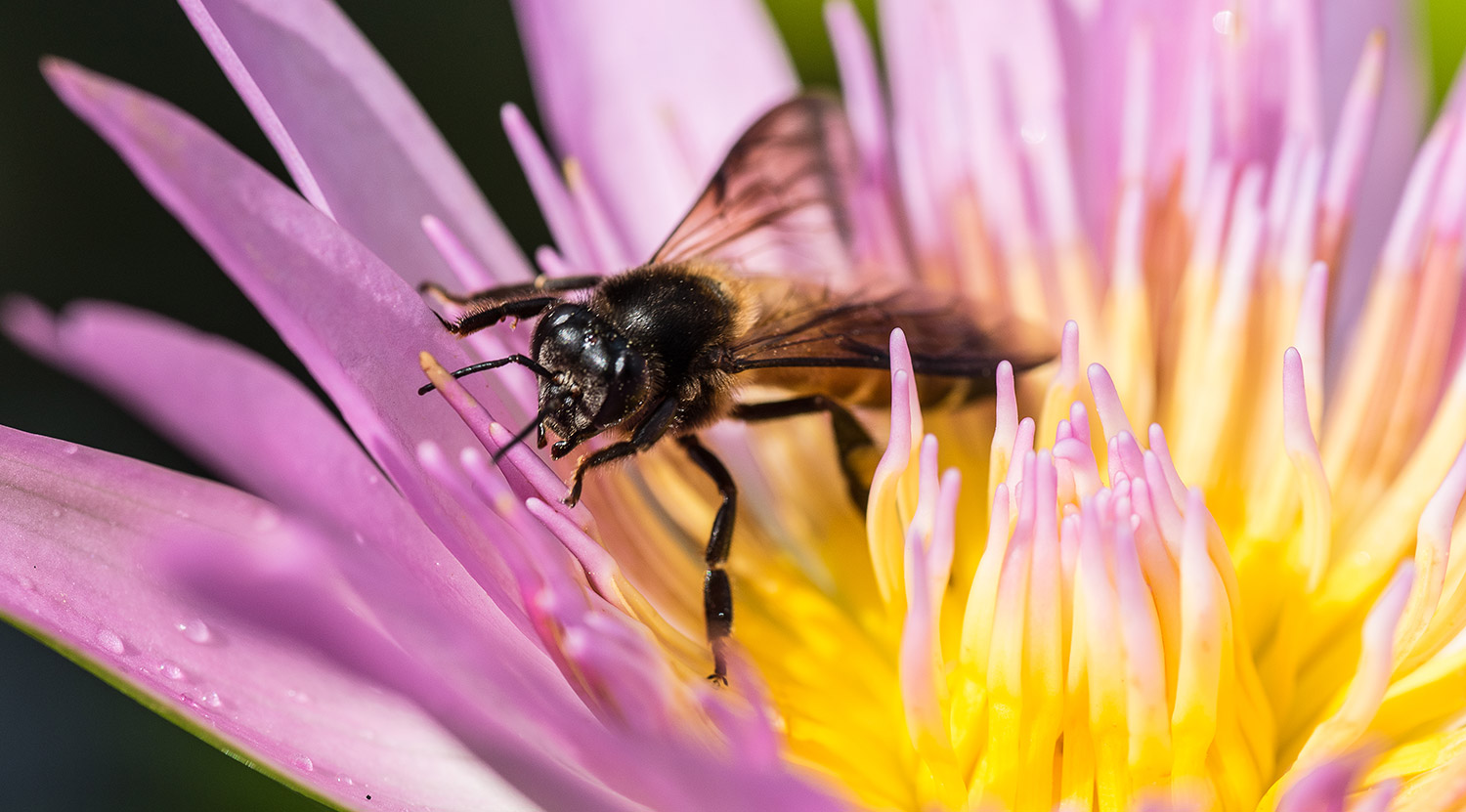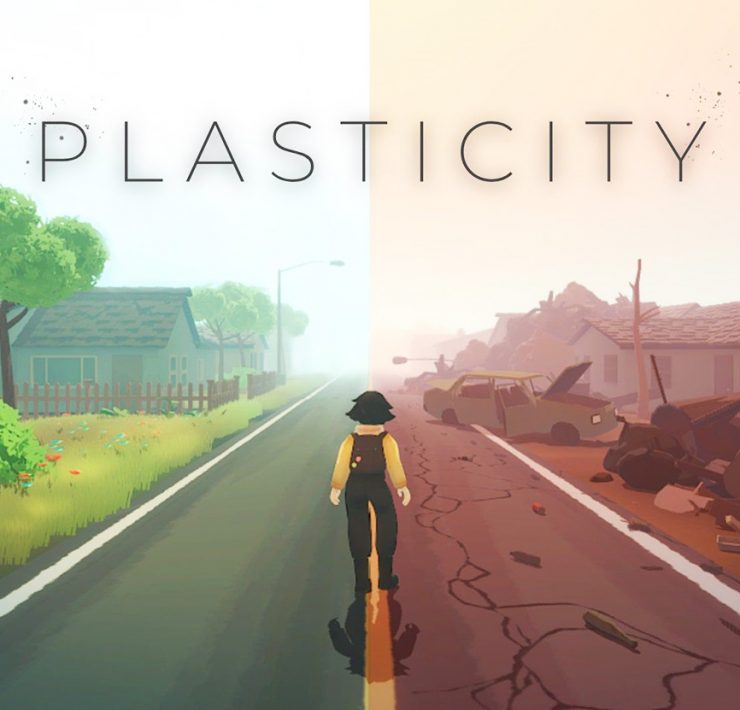To bee or not to bee – isn’t a question. Pollinators are begging for our attention!
- Often dismissed as pests and now facing the threat of decline, it’s high time we recognize pollinators for what they are – life savers

Akshay Singh Jamwal is a portrait photographer based in Mumbai.…
I’ve always found insects to be fascinating. From their radical transformations during a life cycle, to their abundance and omnipresence, the success of insects as lifeforms on our planet has always amazed me.
Consider some of these facts – insects are the only terrestrial animals native to Antarctica. If you lined up all the terrestrial animals on Earth, every fourth would be a beetle. Adult mayflies don’t live longer than a day (some adults only live for a few minutes) as opposed to a termite queen that might live up to half a century or longer. Here’s a really interesting one – dragonflies have anteceded dinosaurs by more than 55 million years! And of course they’re still around.
I could prattle on with brow-raising facts, and yet the importance of insects to the ecosystem is largely unappreciated by most people. They form the base of the terrestrial food chain, yet most of us regard them as little more than a nuisance or as pests. For many of us, insects usually evoke revulsion, and stinging insects in particular (bees included) are often seen as something to fear. However, if left alone, they’re as harmless as anything else. In fact, they’re harmless even when not left alone. I can attest to this because I’ve been taking photos of bees since early 2015 as part of a photo series called the Pollinator Project and have mostly emerged unscathed. My engagement with pollinators and bees in particular over these years has opened up a whole new world for me.
‘Dragonflies have anteceded dinosaurs by more than 55 million years .’

Not all bees are Honey Bees
Whenever I tell people that I take photographs of bees in my spare time, the first few questions naturally revolve about honey, hives, or stings. Occasionally, people might even mention relatives or acquaintances that are apiarists or some such. This is a good lead-in for a rebuttal to those presumptions, because when I tell people that I don’t necessarily mean honey bees, it always piques their interest. The resulting furrowed brows or sideways-cocked-heads mean that I have their attention for the next few minutes, if not longer.
Indeed, the very notion that all bees aren’t honey bees is news to a lot of people. In fact, even an online image search will leave you inundated with photographs, graphics and images of the honey bee. I initially found this synonymy to be a little frustrating, but I now see it as an opportunity to share my intrigue. Let’s look at some facts again – honey bees only comprise 7 species out of an estimated total of 20,000 species of bees. To put that number into perspective, the current estimate for the number of bird species (worldwide) stands at around 10,000.
‘honey bees only comprise 7 species out of an estimated total of 20,000 species of bees.’

Bees are crucial for our sustenance. Far from being harmful, bees – honey bees and others – are crucial to our food security. The numerous kinds of plants that we rely on for food have been co-evolving with bees for 150 million years or so. In effect, plants have driven the diversity of bees, and vice versa.
Without exaggeration, almost all the fruits and vegetables we eat, be it tomatoes, coconuts, lychees, pears, apples, or even cucumbers and all the legumes, are pollinated by insects. And when I say insects, I mean bees, mostly. Sure, flies, butterflies and other animals assist pollination too, but it’s really the bees that are the …um… bees knees.
‘almost all the fruits and vegetables we eat, be it tomatoes, coconuts, lychees, pears, apples, or even cucumbers and all the legumes, are pollinated by insects.’
Bees are pollinators
In order to reproduce, plants bear flowers, which are their reproductive organ systems. Flowers have a male part – the stamen – where pollen is produced. The ovule, or the flower’s “lady bit”, is what the pollen needs to get to. Pollen can’t get to the ovule without assistance and this is where pollinator insects step in. Some plants however, can self-pollinate; the wind dislodges pollen and it makes its way to the ovule. Fertilisation occurs a while later, and voila! A fruit is born. Most staple crops, certainly all the grasses (e.g. rice, wheat, and corn) are wind-pollinated.
Fruits and vegetables, on the other hand, often require insects to pollinate them. In fact, several of these plants have the male bits on one flower and the female bits on another. Some plants are even what is called dioecious, i.e. the plant is either entirely male or entirely female, thereby being completely reliant on pollinating insects to reproduce.
Now, the degree to which insects can help, varies, but pollinating insects for the most part, are beneficial creatures. E.g. tomatoes self-pollinate, but in one study in India, bumble bees contributed significantly to fruit size and crop yield.
It would not be unfair to say that the long-term abundance of bees and other pollinating insects in the biosphere is therefore directly responsible for long-term food security. In particular, bees excel at this service. Not only do they depend on flowers at every stage of their life cycle, they will leave plants unharmed in the process of feeding. The same couldn’t be said of other insect pollinators like flies or beetles, both of which are responsible for quite a lot of crop damage worldwide. Unfortunately, in attempting to control their numbers to grow more food, we’ve also decimated the insect population at large.
‘Bees not only depend on flowers at every stage of their life cycle, but also leave plants unharmed in the process of feeding.’

Worrying decline
For years, most people – entomologists and experts included – believed the resilience of insects to be infinite. However, we’ve systematically hacked away at so much of their habitat(s) and laden so much agricultural land with pesticide, that we’re beginning to see their decline.
Nature reserves in Germany, for example, have recently reported a loss of 75% of their flying insects. In the U.K., two bumble bee species have gone extinct in the last 5 years, with many more to likely follow
Unfortunately we don’t even have figures for declines in India (we haven’t even studied what we have, much less what we’re losing). But it’s hardly inconceivable that similar declines are occurring here too. One decline that has been documented had to do with the introduction of Apis mellifera, or the European honey bee, to the Indian subcontinent in the mid-90s.
‘we’ve systematically hacked away at so much of their habitat(s) and laden so much agricultural land with pesticide, that we’re beginning to see their decline.’
Large-scale commercial rearing is threatening native species
Asia has its own native species of honey bees, called the Asiatic honey bee, or Apis cerana***. Beekeepers in India and Asia have traditionally been using this species for centuries. At the turn of the century, this changed. While our native species is better-adapted for the climate in India, the European honey bee offers something that most beekeepers would naturally lust after: more honey. It’s not just a few grams, either.
The difference in honey yield between the two species is somewhere between 2-3 times in the European honey bee’s favour. With harsher weather and no food at the end of the year, A. mellifera has evolved to hoard honey over the winter. Consequently, a beehive of European honey bees will yield about 25-30 kilograms of honey every year. Compared to it’s Asian cousin’s 8-10, it’s bound to be more enticing to apiarists. This greed for more honey doesn’t come without a cost, of course. The European bee brought with it a host of diseases and parasites, and by the end of the century, these obviously spread to our native species.
North India, in places, saw a nearly 90% decline in A. Cerana colonies. They have since recovered somewhat, but the competition remains fierce, since beekeepers in Punjab and Rajasthan are believed to now have switched largely to European honey bees. There’s only so much food to go around, though and any commercially reared organism has the obvious long-term advantages.
‘Beekeepers in Punjab and Rajasthan are believed to now have largely switched to European honey bees.’

Wild bees, our silent heroes
Wild bees, on the other hand, don’t have that obvious a value. They’re our silent heroes, trudging on, helping plants thrive worldwide. And they’re in trouble. People aren’t even aware that the vegetables and fruits that deck the aisles of every supermarket are inexpensive today because insects pollinate them for free.
There might just come a time when we might have to employ to pollinate certain plants at all. If you think that’s a ridiculous notion, it’s already happening in Sichuan, China, where the land has been extirpated of pollinators and people (yes, people!) have to pollinate apple flowers by hand
Whether that’s an ominous sign of things to come (and the consequent skyrocketing prices for fruit and vegetables) or a small but sad phase in human history is up to us.
What Can You Do To Help?
The easiest answer to that is, get a few native flowering plants to your garden. If you don’t have a garden, get a few flowerpots and deck them out on your window. Try and ensure that they’re native flowering plants and that they aren’t ornamental (these are purely decorative and have no nectar to offer pollinators).
Better yet, grow a few herbs and spices. Basil, for example, is great at attracting little bees, particularly blue banded bees. Basil flowers several times during the year and you’re also likely to see butterflies and moths attend to the plants’ sweet offerings. Also, in case you haven’t heard: the leaves are great for pizza.
Ethico India podcast link: https://open.spotify.com/show/0Vb9kpUhYRil8f3F7lhRhh
Image Credits: Akshay Singh Jamwal
Akshay Singh Jamwal is a portrait photographer based in Mumbai. Although he began his journey in the tech industry while working towards a physics degree, he decided to drop out in favour of a career in photography. When he isn't photographing actors or people at Fortune 500 companies, he enjoys strolls in nature reserves. He sometimes mutters to the six-legged creatures that he appreciates, occasionally leading to uncomfortable stares from passersby.







